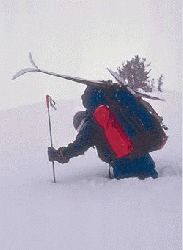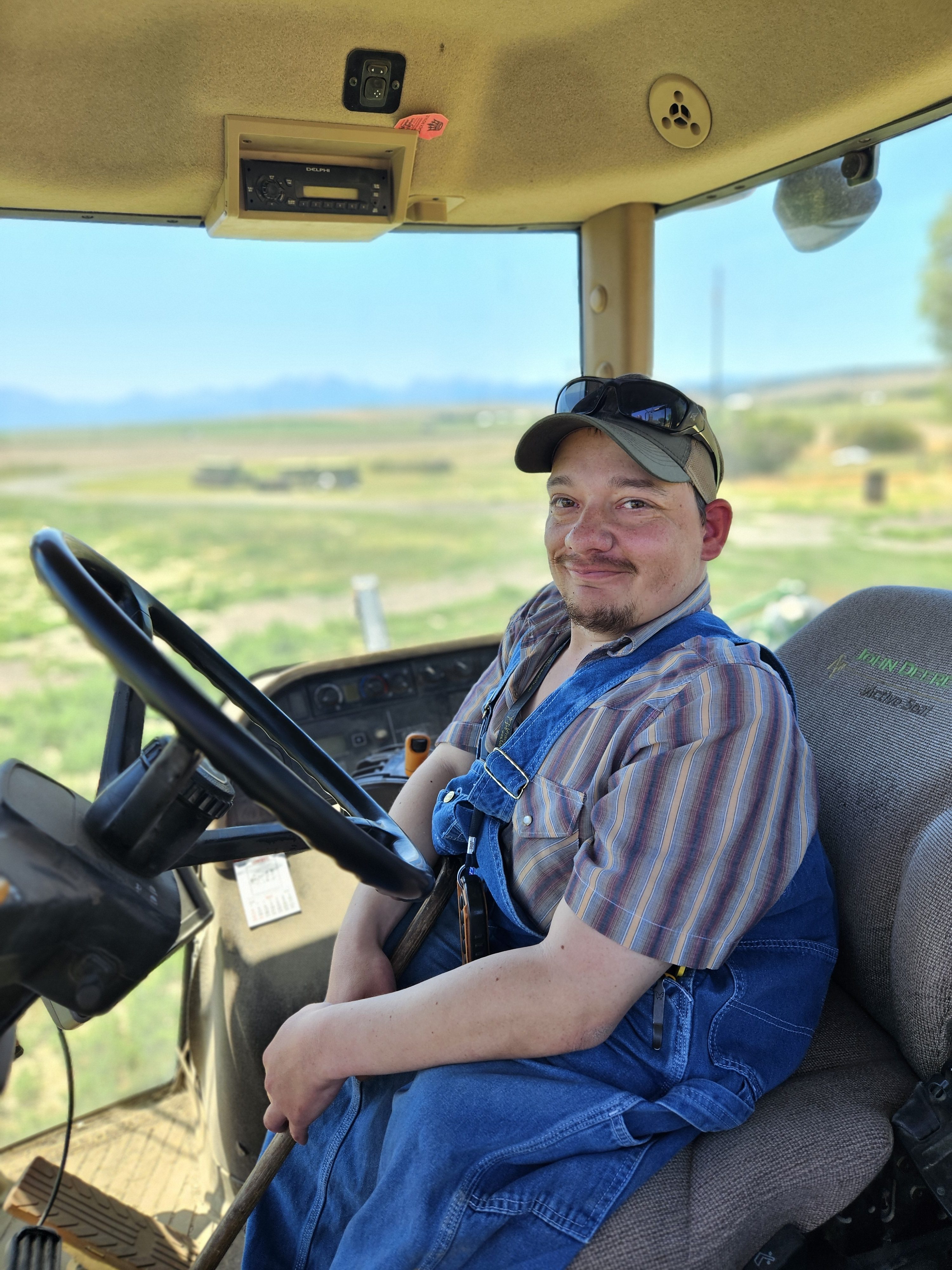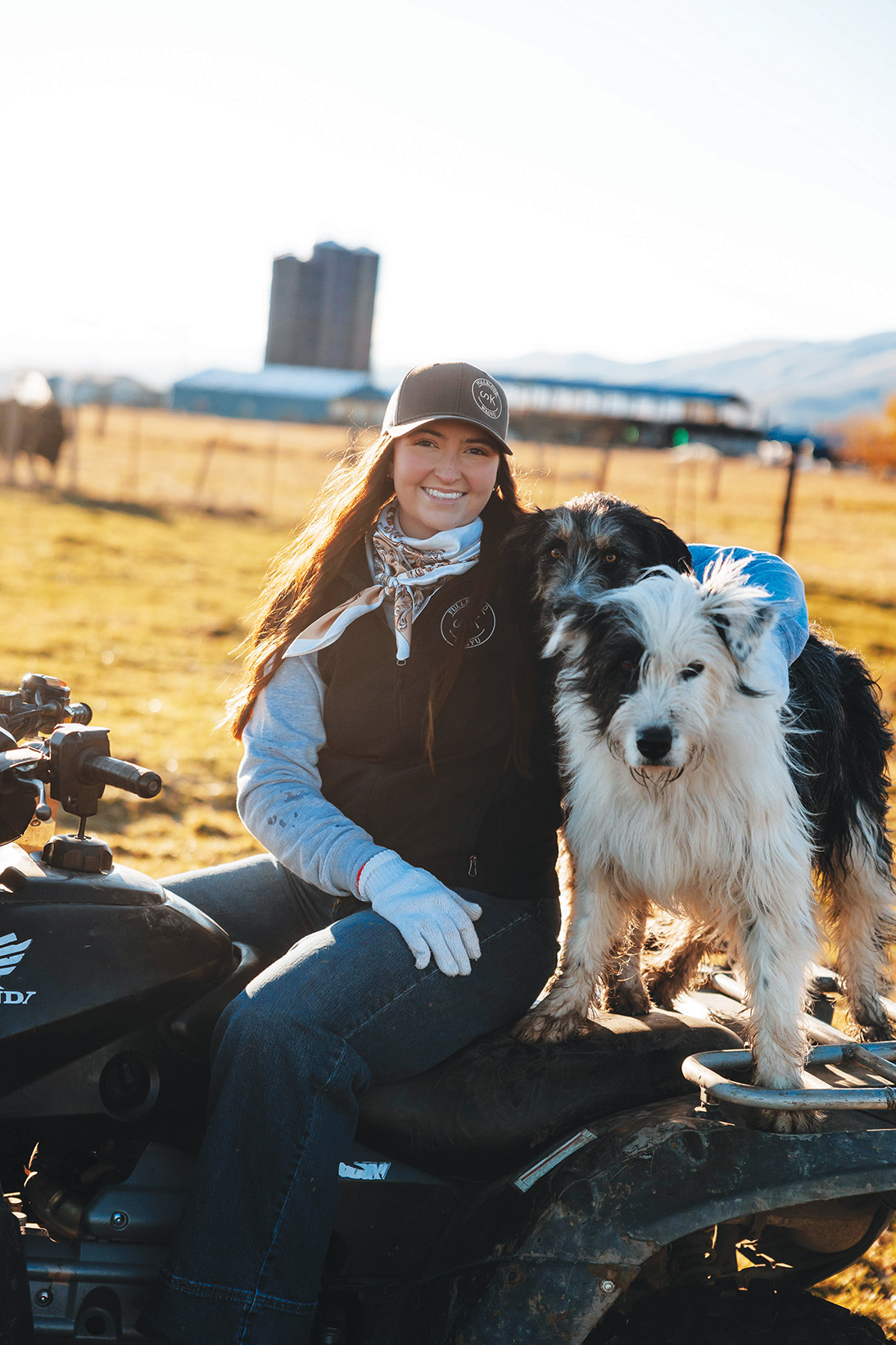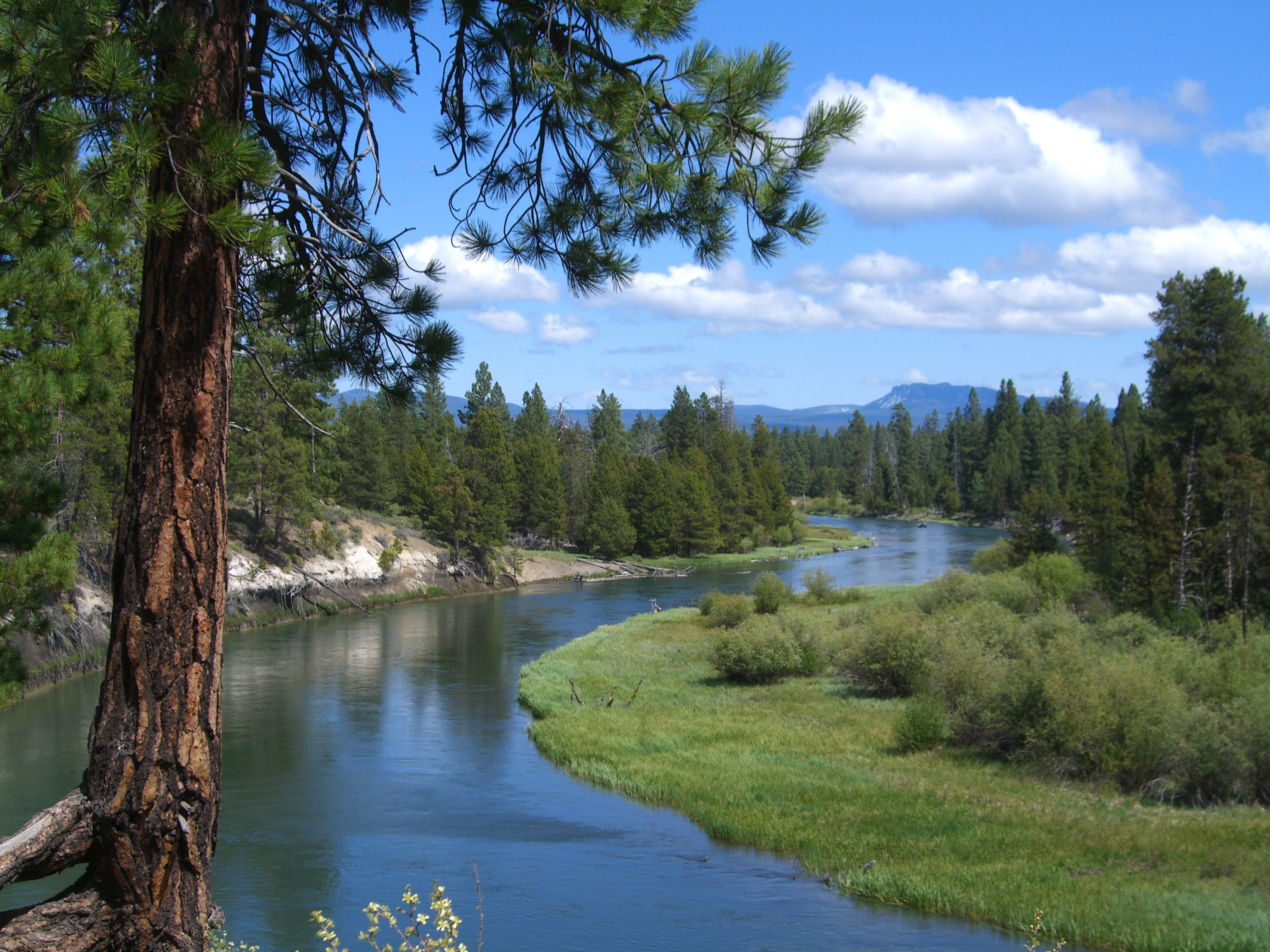Adventurers ski across the Wallowas in winter
Published 12:00 am Thursday, January 18, 2001

- Waist-deep snow is only one of the challenges lurking in the wilderness backcountry of the Wallowa Mountains. (Submitted photograph).
By JAYSON JACOBY
Trending
Of the Baker City Herald
As the alpenglow dimmed and the January cold flexed, Dave Clemens and David Petrie burrowed into their sleeping bags, knowing there was nothing above them but black winter sky, and all of Northeastern Oregon below.
The only sounds came from their thudding hearts, still beating quick from the exertions that brought them here.
Trending
That, and the wailing wind.
Wailing and relentless, too, were the gusts there at the summit of Eagle Cap, almost 9,600 feet up.
The air was thin and cruelly cold.
Its likely no one in Oregon, save a passenger on a red-eye flight, was sleeping in a place any higher above the sea than this pair on this night.
The snowy platform where Clemens and Petrie rested was not just the zenith of the surrounding Wallowa peaks, but of their shared dream, as well.
To get there they had skied across slopes so steep that a slipped ski might have meant death.
They had listened, Petrie remembers 17 years later, with awe and foreboding at the humbling sound of an avalanche plunging down Jackson Peak.
They had sweated and they had panted and mostly they had wondered: Will we make it this time?
And when they finally did reach the summit they found the place wasnt nearly so inhospitable as they imagined it might be.
Actually it was serene.
That was an absolutely quiet day, said Petrie, now 64. You couldnt have fluttered a feather up there.
The night was not so tranquil.
The wind came up, recalled Clemens, whos a year younger than his longtime backcountry skiing partner. It got under the tent and just started bouncing us around.
In the frigid dawn the pair packed up, ready to continue their arduous trip across the heart of Oregons largest wilderness area, named for the very peak on whose roof they had slept.
Petrie, who as the tents owner also was responsible for stuffing it into its sack every morning, was trying to corral the flailing red nylon when a gust grabbed the tent and started pushing it and him toward the precipice.
Suddenly Clemens made what Petrie called a flying leap, landing in the middle of the unraveling tent.
Together, they managed to shackle the thing before the wind could take it into Idaho.
But then Clemens and Petrie, who had already traversed the Wallowas twice during winter and would make four more crossings, always made a good team.
Skiing the trackless peaks and forests of the Wallowas was neither a new nor an intimidating concept for either man.
Both were experienced ski mountaineers.
Petrie knew the range a bit better than Clemens, having moved to Pine Valley in 1967, about a decade before Clemens arrived in the Panhandle.
Clemens had made many winter ascents and trips in the Central Oregon Cascades.
They met through mutual friends, and during one of their conversations about the trips each had made, the pair started discussing one journey neither had even tried: crossing the high Wallowas in winter.
Certainly Clemens and Petrie werent the first skiers who were drawn to those mountains, who wondered whether they were skilled enough and strong enough to master them at their most harsh.
Petrie had even heard of a failed attempt back in the 1950s.
They gathered maps, plotted possible routes, dreamed.
During the winter of 1981-82 they decided that if a week of fair weather seemed likely, theyd give it a go.
In January the skies finally cleared.
Burdened with 50-pound packs, Petrie, Clemens and his wife, Sue, climbed toward Little Eagle Meadows west of Cornucopia.
Their first attempt was going well. The weather was fine, and the trio easily crossed the divide near Crater Lake and followed Cliff River down to the south fork of the Imnaha.
They went east along the Imnaha for a few miles then headed north, crossing the Imnaha Divide and the shoulder of Mount Nebo. Then the group traversed the slopes above Aneroid Lake, the last major landmark before the dangerously steep descent along the East Fork of the Wallowa River to journeys end at Wallowa Lake.
The group slept out four days, covering eight to 10 miles a day and basking in weather that was nearly ideal except one blustery night near Aneroid Lake.
Petrie was surprised to discover he had over-prepared, having actually gained weight on his menu of 3,000 calories per day.
Everything went smoothly, he said. We had the right gear, the right food and the accumulation of experience between the three of us.
Over the next decade, Clemens and Petrie would attempt a crossing of the Wallowas eight more times.
Twice they turned back, discouraged by bad weather or the unacceptable threat of avalanches.
Six times they made it through, five times with only each other as companion, once accompanied again by Sue Clemens.
The trip, Petrie said, became almost a habit.
It just seemed like something we were going to do every year, he said.
It was kind of an adventure for us, Clemens said. Every year, early in the winter, wed start planning.
As it happened, that first trip in January of 1982 was one of their most enjoyable and simplest.
A year later Clemens and Petrie, skiing as a two-man team, went up the east fork of Pine Creek to near its headwaters, then skied down the steep ridge to the east fork of the Imnaha.
Then snow started to fall.
Rather than ski back out, they decided to try to find a tiny cabin near the confluence of Cliff River and the Imnaha.
When they arrived they found the snow so deep they had to dig down five feet to reach the door, Petrie said.
As they slept, 18 inches of new snow piled up.
The next day they began climbing toward Hawkins Pass. The storm had passed, but the avalanche danger was extreme. Petrie even started a small slide himself, but he didnt go far.
The pair had planned to ski from the pass down into the Lakes Basin, but the treacherous conditions convinced them to head straight for the West Fork of the Wallowa River, Clemens said.
That was no piece of cake, either, he said.
There is no easy route through the Eagle Cap Wilderness in mid-winter.
But some ways, Clemens and Petrie say, are at least less arduous than others.
Their fourth trip, one of the two in which Sue Clemens went along rather than wait at home and worry, was one of the former.
The trio started at Forshey Meadows and skied down to main Eagle Creek, then climbed along the whole of East Eagle Creek to its source near Horton Pass.
Thats a long ways, but the grade is moderate.
Yet in the midst of the snowbound Wallowas, even a comparatively easy trip may be just a seconds indiscretion from turning to disaster.
As the group was descending Hurricane Creek, Sue Clemens had trouble on a traverse across an avalanche chute, a spot so perilous that Dave Clemens remembers he was unable to watch as his wife creeped along.
She managed to make it across the worst stretch and thus avoid a fall of some 200 feet into a canyon.
That was a dramatic moment.
But a much different incident earlier on the trip showed how even a mundane matter can threaten a person traveling in such a remote and potentially inhospitable place.
As the trio was skiing along East Eagle Creek, Petrie, who was breaking in a new pair of ski boots, suddenly broke his normally smooth stride.
One of his boots was busted.
Merely an annoyance for a skier skating along through powder within sight of his car, this malfunction was serious enough, Clemens said, to jeopardize the whole trip.
Petrie rigged up a fix, though, and the boot lasted the rest of the trip.
Clemens would rather grasp a canoe paddle than a ski pole these days.
But even though solo wilderness canoe trips are his current favorite outdoor activity, he likes to reminisce about those days in the Wallowas, those short but brilliant winter afternoons when the sunlight off the snow and the blue sky were so bright it hurt to open your eyes.
Petrie remembers, too.
Most particularly he recalls that night on Eagle Cap, and how at the edge of the dark sky the lights of Halfway made a dim glow, as if some unseen artist had caressed the scene with a fine brush.
He and Clemens had tried to reach its pinnacle before, and failed.
That was the only time the mountain had permitted us to be there, Petrie said, acknowledging with both his words and his tone the respect mountaineers have for the peaks where they experience cherished moments of fear and accomplishment.
We realized this was a rare opportunity, Clemens said. Then the wind reminded us who was boss.
Both men said they would try it again, if the conditions were right.
Even now, most of a decade gone since they last challenged those big mountains, they are willing to return to those cliffy places above timberline where the kick turn may be a life-or-death skill, to those swift alpine streams where they fished for drinking water with a bucket tied to a rope and teetered on the brink of a dunking that might be not just frigid but also fatal.
The trip would be more difficult now, Petrie admits; the legs and lungs, inevitably, are not as efficient as they were 20 years ago.
But the team is still intact, and that, they agree, is the most important thing.
I always knew if I got in trouble I could count on Dave, and I knew he felt the same about me, Petrie said.
We talked about inviting other people, but we were comfortable with each other, Clemens said, nodding toward Petrie. This guys one of the toughest in the mountains Ive ever been around.
Neither man ever considered a solo crossing. Too dangerous. Boring, too, with no one along to partake in the peril and the triumph.
Its nice, Petrie says, to share with someone else.









